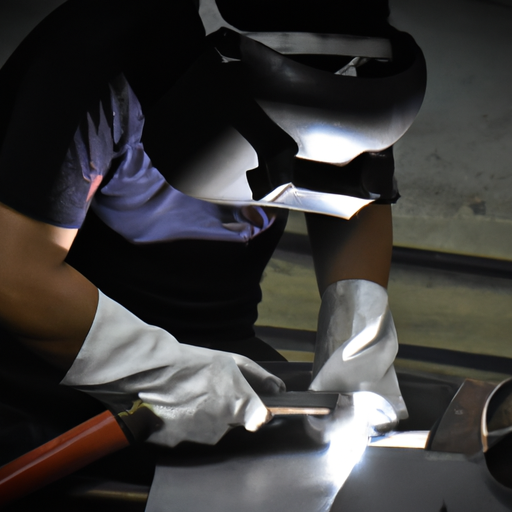Welding is a critical process in many industries, from construction to manufacturing to automotive. It involves joining two or more pieces of metal together using heat and pressure to create a strong bond. In order to ensure the safety and quality of welded products, there are specific product standards that must be followed.

One of the key product standards for welding is the selection of materials. The type of metal being welded, as well as its thickness and composition, will determine the appropriate welding process and filler material to use. For example, welding stainless steel requires different techniques and materials than welding carbon steel. It is important to follow the manufacturer's recommendations for materials and ensure that they meet the required specifications.
Another important product standard for welding is the equipment used in the welding process. Welding machines, electrodes, and other tools must be properly maintained and calibrated to ensure consistent and reliable welds. Equipment should also be inspected regularly to ensure that it is in good working condition and meets safety standards.
Procedures are also a critical component of welding product standards. Welding procedures must be documented and followed precisely to ensure that welds are performed correctly and consistently. This includes pre-weld preparation, welding techniques, post-weld inspection, and quality control measures. Procedures should be developed based on industry standards and best practices to ensure the integrity of the welds.
Personnel qualifications are another important product standard for welding. Welders must be properly trained and certified to perform welding operations. This includes knowledge of welding processes, materials, equipment, and safety procedures. Welders should also be able to interpret welding symbols, read blueprints, and understand welding codes and standards.
Quality control is a key aspect of welding product standards. Welded products must undergo rigorous inspection and testing to ensure that they meet the required specifications. This may include visual inspection, non-destructive testing, and destructive testing to verify the quality of the welds. Quality control measures should be implemented throughout the welding process to identify and correct any defects or issues that may arise.
In conclusion, product standards for welding are essential to ensure the safety and quality of welded products. By following established standards for materials, equipment, procedures, personnel qualifications, and quality control, companies can produce high-quality welds that meet industry standards and regulations. Adhering to these standards not only ensures the integrity of the welds but also helps to prevent costly rework, repairs, and potential safety hazards. By prioritizing product standards for welding, companies can maintain a high level of quality and consistency in their welding operations.
Welding is a critical process in many industries, from construction to manufacturing to automotive. It involves joining two or more pieces of metal together using heat and pressure to create a strong bond. In order to ensure the safety and quality of welded products, there are specific product standards that must be followed.

One of the key product standards for welding is the selection of materials. The type of metal being welded, as well as its thickness and composition, will determine the appropriate welding process and filler material to use. For example, welding stainless steel requires different techniques and materials than welding carbon steel. It is important to follow the manufacturer's recommendations for materials and ensure that they meet the required specifications.
Another important product standard for welding is the equipment used in the welding process. Welding machines, electrodes, and other tools must be properly maintained and calibrated to ensure consistent and reliable welds. Equipment should also be inspected regularly to ensure that it is in good working condition and meets safety standards.
Procedures are also a critical component of welding product standards. Welding procedures must be documented and followed precisely to ensure that welds are performed correctly and consistently. This includes pre-weld preparation, welding techniques, post-weld inspection, and quality control measures. Procedures should be developed based on industry standards and best practices to ensure the integrity of the welds.
Personnel qualifications are another important product standard for welding. Welders must be properly trained and certified to perform welding operations. This includes knowledge of welding processes, materials, equipment, and safety procedures. Welders should also be able to interpret welding symbols, read blueprints, and understand welding codes and standards.
Quality control is a key aspect of welding product standards. Welded products must undergo rigorous inspection and testing to ensure that they meet the required specifications. This may include visual inspection, non-destructive testing, and destructive testing to verify the quality of the welds. Quality control measures should be implemented throughout the welding process to identify and correct any defects or issues that may arise.
In conclusion, product standards for welding are essential to ensure the safety and quality of welded products. By following established standards for materials, equipment, procedures, personnel qualifications, and quality control, companies can produce high-quality welds that meet industry standards and regulations. Adhering to these standards not only ensures the integrity of the welds but also helps to prevent costly rework, repairs, and potential safety hazards. By prioritizing product standards for welding, companies can maintain a high level of quality and consistency in their welding operations.